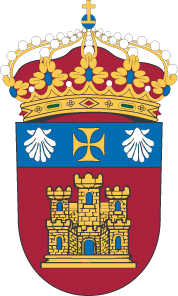Por favor, use este identificador para citar o enlazar este ítem: http://hdl.handle.net/10259/9305
Título
El Patrimonio Jacobeo y su gestión desde las Humanidades Digitales: presente y futuro del Camino de Santiago en Castilla y León
Fecha de publicación
2024
Fecha de lectura/defensa
2024-06-05
DOI
10.36443/10259/9305
Résumé
Esta tesis doctoral centra su estudio en los Bienes de Interés Cultural (BIC) localizados en el Camino de Santiago Francés a su paso por la comunidad autónoma de Castilla y León, desde la perspectiva de las Humanidades Digitales. El objetivo es analizar estos bienes culturales sistemática, detallada, cuantitativa y cualitativamente para profundizar en su gestión y valorización, contribuyendo así al campo de la Gestión del Patrimonio Cultural. Los objetivos específicos abarcan la síntesis de los elementos clave tanto del Patrimonio Cultural y su gestión como del Camino de Santiago, el análisis bibliométrico de estudios sobre el Camino de Santiago, la elaboración de una base de datos detallada de dichos Bienes de Interés Cultural y el estudio de la gestión, protección y enfoque turístico de estos. Además, se evalúa también el papel de herramientas digitales en la investigación de la huella digital de los Bienes de Interés Cultural, facilitando datos cruciales para la toma de decisiones en su gestión. La tesis se enmarca en una metodología interdisciplinar que combina Humanidades Digitales, Ciencia Social Computacional y análisis de Sistemas Complejos, ofreciendo un panorama integrado, combinando diversas perspectivas que hasta ahora habían sido tratadas de manera aislada. Al integrar aspectos históricos, artísticos, turísticos y digitales, el trabajo proporciona una perspectiva holística de cómo estos diferentes elementos interactúan y contribuyen a la gestión y valorización del patrimonio. Este enfoque multidimensional permite a los gestores del Patrimonio Cultural, académicos y responsables políticos obtener una comprensión más completa y matizada, facilitando la toma de decisiones informadas y la implementación de estrategias más efectivas. La investigación aborda específicamente el impacto digital en la gestión del patrimonio, utilizando herramientas como Twitter, Google News y Google Trends para analizar la huella digital del Camino de Santiago. Esta exploración pionera proporciona insights valiosos sobre cómo las tecnologías digitales están remodelando la percepción y la interacción con el Patrimonio Cultural, ofreciendo nuevas oportunidades para su promoción y preservación en la era digital. This doctoral thesis focuses its study on the Assets of Cultural Interest (BIC) located on the French Way of Saint James as it passes through the autonomous community of Castile and Leon, from the perspective of Digital Humanities. The objective is to analyze these cultural assets systematically, in detail, quantitatively and qualitatively in order to deepen their management and valorization, thus contributing to the field of Cultural Heritage Management. The specific objectives include the synthesis of the key elements of Cultural Heritage and its management as well as the Way of Saint James, the bibliometric analysis of studies on the Way of Saint James, the development of a detailed database of the Assets of Cultural Interest and the study of the management, protection and tourism approach of these. In addition, the role of digital tools in the investigation of the digital footprint of the Assets of Cultural Interest is also evaluated, providing crucial data for decisión-making in their management. The thesis is framed in an interdisciplinary methodology that combines Digital Humanities, Computational Social Science and Complex Systems analysis, offering an integrated view, combining different perspectives that until now had been treated in isolation. By integrating historical, artistic, tourism and digital aspects, the work provides a holistic perspective of how these different elements interact and contribute to heritage management and enhancement. This multidimensional approach enables cultural heritage managers, academics and policy makers to gain a more complete and nuanced understanding, facilitating informed decision-making and the implementation of more effective strategies. The research specifically addresses the digital impact on heritage management, using tools such as Twitter, Google News and Google Trends to analyze the digital footprint of the Way of Saint James. This pioneering exploration provides valuable insights into how digital technologies are reshaping the perception of and interaction with cultural heritage, offering new opportunities for its promotion and preservation in the digital age.
Palabras clave
Bienes de Interés Cultural
Camino de Santiago
Camino Francés
Castilla y León
Gestión del Patrimonio Cultural
Humanidades Digitales
Assets of Cultural Interest
The Way of Saint James
The French Way of Saint James
Castile and Leon
Cultural Heritage Management
Digital Humanities
Materia
Arte
Art
Patrimonio cultural-Protección
Cultural property-Protection
Patrimonio cultural-Métodos estadísticos
Cultural property-Statistical methods
Aparece en las colecciones
Documento(s) sujeto(s) a una licencia Creative Commons Attribution-NonCommercial-NoDerivatives 4.0 Internacional











